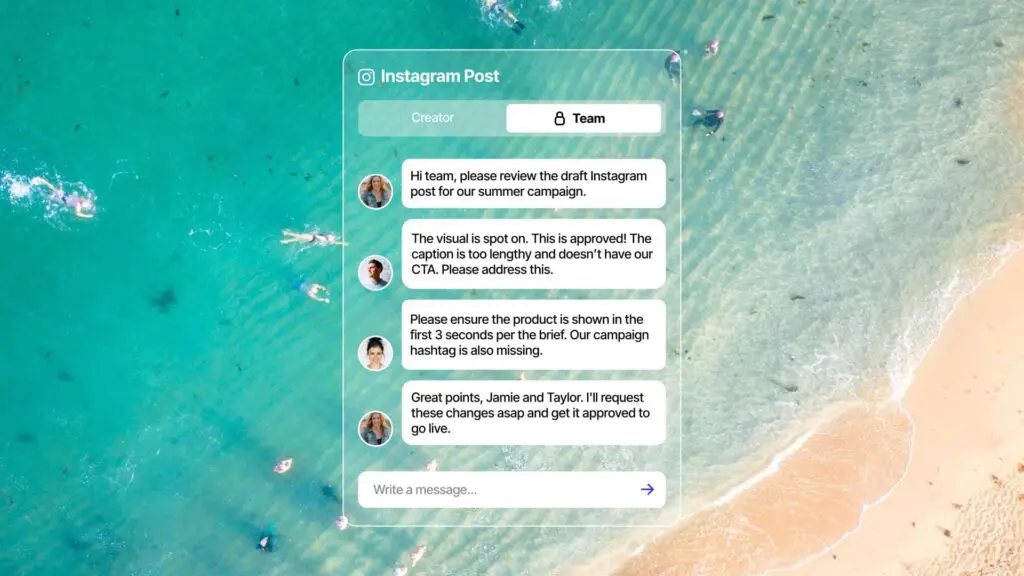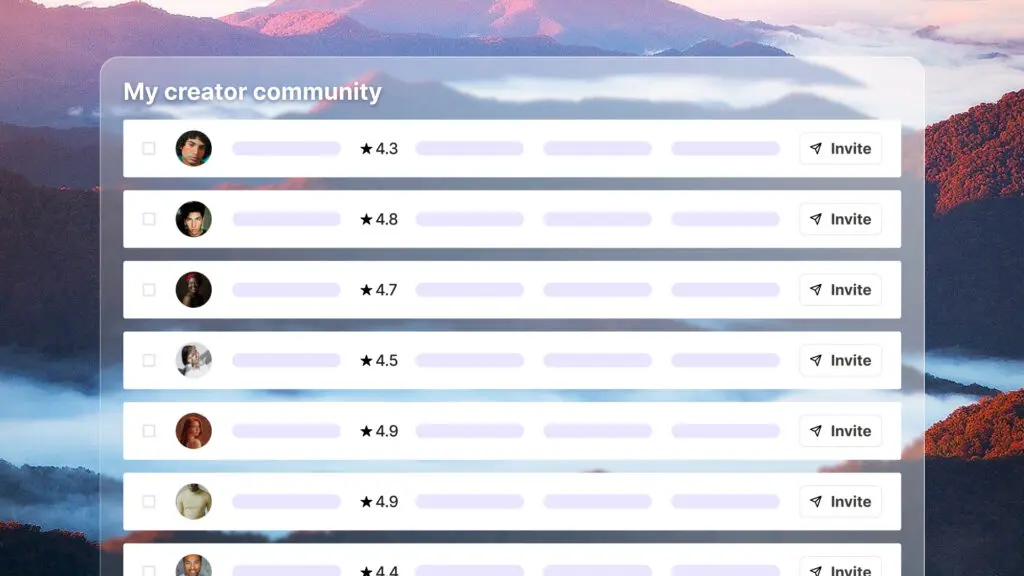
Table of Contents
As digital content consumption continues to grow, marketers are turning to video to grow their brand awareness, drive engagement, and increase sales. Here we share everything you need to know about video marketing and how to do it right
We live in a noisy digital world. With so many posts, comments, and clickbait articles vying for consumers’ attention, it can be hard to stand out and get people to pay attention to what you have to say.
Video marketing is proving to be the silver bullet that can cut through the noise and get people to listen. For example, according to a survey by Wyzowl, 92% of video marketers say that video gives them a good ROI, while 91% of consumers say they want to see more online videos from brands.
Not to mention that half of the respondents say they’re far more likely to share video with their friends than any other type of content.
So, video marketing definitely has a role to play in your digital marketing strategy (if it doesn’t already). However, producing videos can be intimidating if you haven’t done it before. Here we discuss what video marketing is and how to make the most of your video marketing budget.

What is video marketing?
Video marketing is part of your digital marketing strategy, and means that you use videos to increase brand awareness, drive engagement, and generate leads. From product or service descriptions, to livestreams, customer case studies, and behind-the-scenes shots, the options are endless when it comes to showcasing your brand in a unique and positive light.
Why use video marketing?
Video marketing can be a powerful tool in your marketing arsenal. Since adding video to LinkedIn, the platform has experienced a large boost in traffic and revenue, with millions of people making use of the feature. LinkedIn has subsequently launched livestreams as a more immediate way for brands and individuals to engage with their audiences.
These changes follow closely in the footsteps of Instagram, which has been very much focused on video in recent years, and YouTube, which has embraced shorts and other video formats.
Is video marketing a good strategy?
Like any other marketing strategy, video should be used in conjunction with other marketing tools in order to yield the biggest benefits. While video used to have a high threshold to entry simply because of all the production effort that goes on behind the scenes, that’s no longer necessarily the case.
For instance, nearly half (44%) of marketers surveyed by HubSpot have said they use their iPhone camera for producing their marketing videos. This is in line with consumers’ expectations for more authentic and less polished video content.

Types of video
Just like with written content, video content can be incredibly versatile. Depending on your budget and what you’re trying to achieve, there are a number of video types that you can include in your video marketing strategy::
Explainer videos
Explainer videos are popular as they’re educational in nature and entertaining in style. They have a high engagement rate as people who click on them are already searching for a solution to an existing problem.
This is where you can embed your products and services, and show how these solve a customer’s problem. Alternatively, you can go with a more brand-agnostic approach and delve deeper into the problem without necessarily mentioning your brand.
Video ads
Some videos are produced to feature as online ads. These are short videos which have a clear call-to-action (CTA) at the end.
They’re created with a clear brand goal in mind, whether that’s to convert already warm leads via retargeting or to draw new leads in through social media shares and engagement.
Case studies
Nothing speaks better to the quality of your brand than happy customers. Case studies can be an incredible asset for attracting new customers, especially in the B2B world.
So, if you have a customer who’s a big advocate for your brand, use that to your advantage by producing a video case study highlighting the biggest benefits this client has received from using your products or services.
Livestreams
While 42% of people in the U.S. have watched a livestream video, only 36% of brands have posted a livestream on their social media channels. Livestreams are, therefore, an untapped potential for driving engagement and building brand awareness with your target audience.
Luckily, these videos don’t have to be incredibly polished. They’re also very versatile and can be used to showcase a new product, conduct a Q&A, or interview key players in your industry.
Personalised videos
The rise of AI and data analytics has introduced personalised videos into the marketing mix. Since then, personalised videos have proven to be a big winner in driving engagement, click-through rates, and completion times.
For example, brands report that personalised videos have improved click-through rates by 8x while CTAs on personalised videos perform 202% better than more generic ones.
User-generated content (UGC) videos
UGC has grown in popularity in recent years and can be an invaluable asset in your marketing strategy. Not only are they super affordable to produce (your customers do it for you), but they’re also a direct testimonial to how your customers feel about you. It’s a win-win all around.
Behind-the-scenes videos
Similarly to livestreaming videos, where viewers can feel a more direct connection to your brand, behind-the-scenes videos can be a great way to take your audience on a journey. Whether that’s showing them how you’re manufacturing your products or what a typical day in the office looks like, these videos can make viewers feel invested in your brand and boost brand loyalty.

How to measure video marketing
In order to know that you’re doing a good job, you need to gather data on how your videos are performing. What data you measure depends on what you’re looking to achieve, but here are the most common and useful metrics you can look at:
Impressions
‘Impressions’ refers to the number of times a person has seen your video on a page. This is usually a good metric to track when you’re trying to grow your brand awareness and want to see how effective your marketing campaign has been. Bear in mind that what counts as an impression can sometimes be misleading. For instance, just because a video features on a page doesn’t necessarily mean that the viewer scrolled all the way down to it, even though that viewer may still count towards your impressions count.
Click-through rate (CTR)
This metric tells you how many of the people who saw your video actually clicked on it. This helps you to determine how enticing your thumbnail, subject line or even video description are, so you edit them to improve the CTR.
Completion rate
Knowing how much of your video people actually watch can tell you a lot about the effectiveness of your content. Is there a specific part in the video where most viewers drop off? Should your video be shorter? Do you need to get any key points in earlier on? The completion rate is a useful analytic for understanding how you can improve your content and storytelling.
CTA conversions
Finally, it’s really important to track if the video has achieved your goal. Depending on what your call-to-action is, you can track things like comments, shares, likes, signups, or any other activities viewers may have done as a result of watching your video.
How to produce videos (the stages and what they entail)
Video production can feel intimidating, but it doesn’t have to be. When it comes to the actual planning and execution of your videos, here are the four main steps you need to cover to make sure what you deliver at the end meets your expectations.
Create a storyboard
Marketing is all about telling a story. You’ll make your life so much easier if you have a clear idea of what the story is that you want to tell and how you’re going to tell it. This means that you need to decide if you’re going to create a ‘hero’ story where your customer is the star of the show or a news story where you explain the what, where, when, and how of your main idea.
Once you have your main story idea, you need to create a storyboard that will include all the scenes that will go in the actual video.
Write a script
Once you have the storyboard created, you need a video script of what you’ll actually say in the video. If you have actors, you need to write down exactly what they have to say in each scene. Likewise, if you’re going to have a narrator talking over the scenes you need a script which closely follows the video frames and has the desired impact.
Planning a more natural ‘off the hoof’ video? You’ll still want clear guidance about each point you need covering in the video and where those points will best fit.
Shoot the scenes
With the text and storyboard done, you’re ready to shoot your scenes. Depending on your budget, you can go for a more elaborate setup or you can use your smartphone with some additional lighting to capture more authentic frames.
Here, make sure you choose a setting and colours that correspond with the emotion you want to evoke and that are aligned with your brand.
Edit the video
Don’t neglect the editing stage. This is where you decide which scenes make it into the video and which need to be cut, as well as making any changes to the contrast, brightness, and the overall look and feel of the video.
How to use SEO in video marketing
SEO is a great way to discover what your audience is interested in, but also what words to use to describe your videos in order to get them more easily discovered. Using tools like Ahrefs, Semrush, MOZ or BuzzSumo can give you a plethora of ideas on what topics are trending in your industry, the search volume of a keyword and how difficult or easy it is for you to rank for that word or phrase.
Costs of producing a video
While the cost range for video production can be from zero to hundreds of thousands of dollars, 91% of marketing companies spend under $50,000 to create a marketing video. For those who are producing videos in-house, the biggest expense is the actual production, which include filming, audio, and lighting.
That said, you don’t always need fully polished videos in order to win over the hearts of your audience. The main thing is to have a good story to tell and to do it in a way that resonates with people, whether that’s through showcasing a different side of the business or focusing on solving your customers’ problems.
Video marketing strategy – quick steps
- Build your personas and target audience – before you can build any strategy, for any channel, you need to know who you’re targeting. Build your personas and be as detailed as possible about your demographics
- Define your intentions – use a content or customer mapping exercise to determine which messages you want to convey by video at the different stages of the customer mindset and across which channels
- Plot your campaigns – your customer and content mapping exercise will define your always-on comms. Now you need to plot out how many campaign messages you’ll put out. This could be seasonal, around industry events, or just around key trading periods for your business
- Build your processes – next up, you need to define who does what in the process, how long each stage should take, where assets are stored, and how they’re put live
- Craft your identity – get your brand or creative team on building out what your video approach will look like. What graphics will be sued for consistency, how will you display certain elements such as names, credits etc., and how will you approach certain video types (listed above)
- Define goals and track performance – you want to benchmark and set goals for your video marketing, from reach through to conversions (where relevant). Then define how often you’ll report on these goals and in what format
Video marketing FAQs
How can small businesses with limited budgets achieve high engagement with video marketing?
Small businesses can achieve effective video marketing on a budget by focusing on content quality over production value. Authenticity often outshines heavily produced content, especially on platforms like TikTok and Instagram, where users value real, relatable content.
For example, using smartphones, free editing apps, and natural lighting can create appealing videos without high costs. Building engagement also involves regularly posting content aligned with trends and your audience’s preferences, leveraging organic reach, and fostering community interaction through comments and shares.
What specific tools or software are recommended for creating and editing videos?
For businesses or individuals looking to streamline their video creation, a range of accessible tools can elevate video quality. Free or affordable apps like Canva, InShot, and CapCut offer powerful editing features, including text overlays, transitions, and easy resizing for different platforms.
If video creation feels overwhelming, let creators produce your video content for you, like hundreds of Vamp customers who rely on creator-generated content that resonates with diverse audiences. Outsourcing this process can save time and ensure that your content is both creative and effective.
What strategies are effective for integrating video marketing with other channels to maximise reach and conversions?
To maximise reach, consider integrating video marketing across your social channels, website, and even email marketing campaigns. Consistent messaging across channels creates a cohesive brand experience and drives traffic between platforms. For example, use short, engaging videos on social media that link to longer content on your website.
Email marketing is also effective when video previews are included, increasing click-through rates. Incorporating videos into each stage of the customer journey, from awareness to conversion, strengthens your digital presence and reinforces brand messaging.
Feeling like video marketing might be for you but need some help getting started? Reach out to our friendly team at VAMP and we’ll be happy to show you how to grow your online audience and expand your social media presence.

